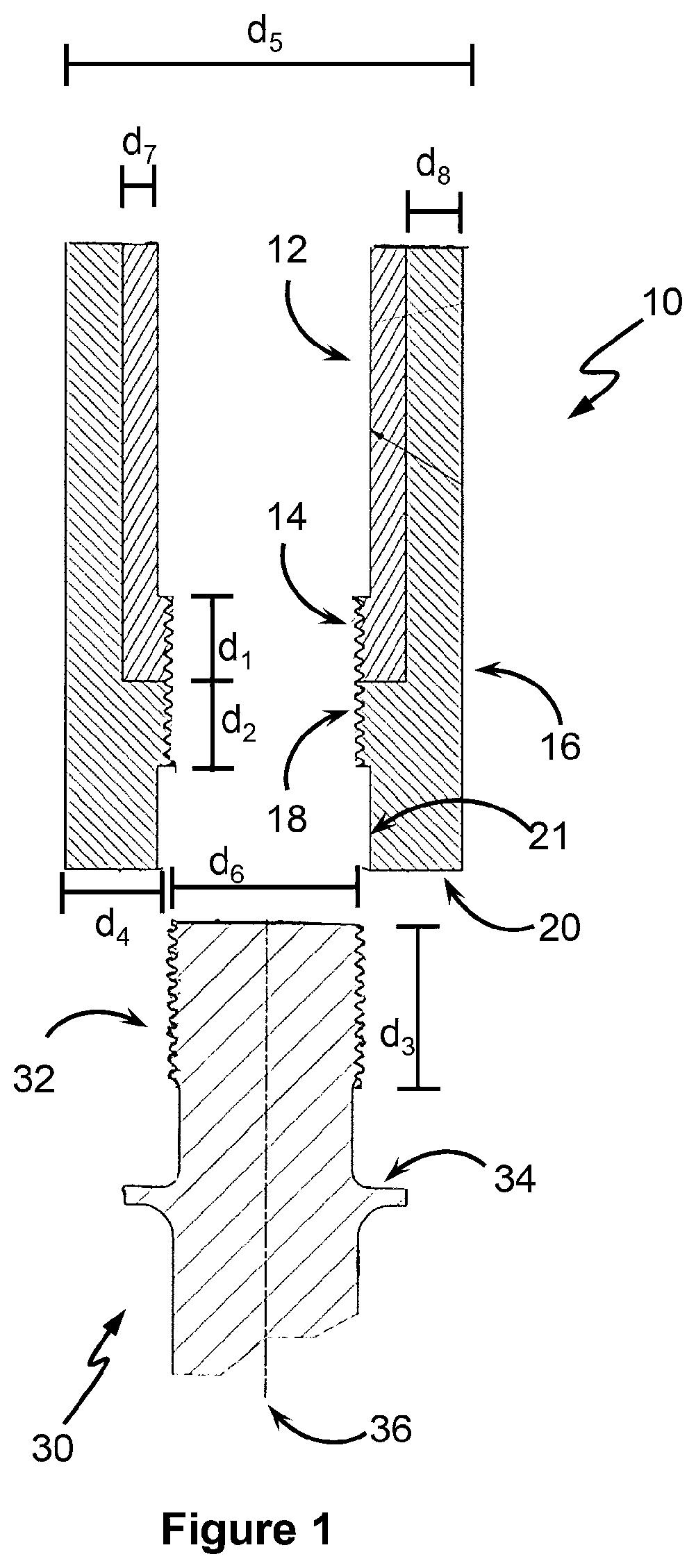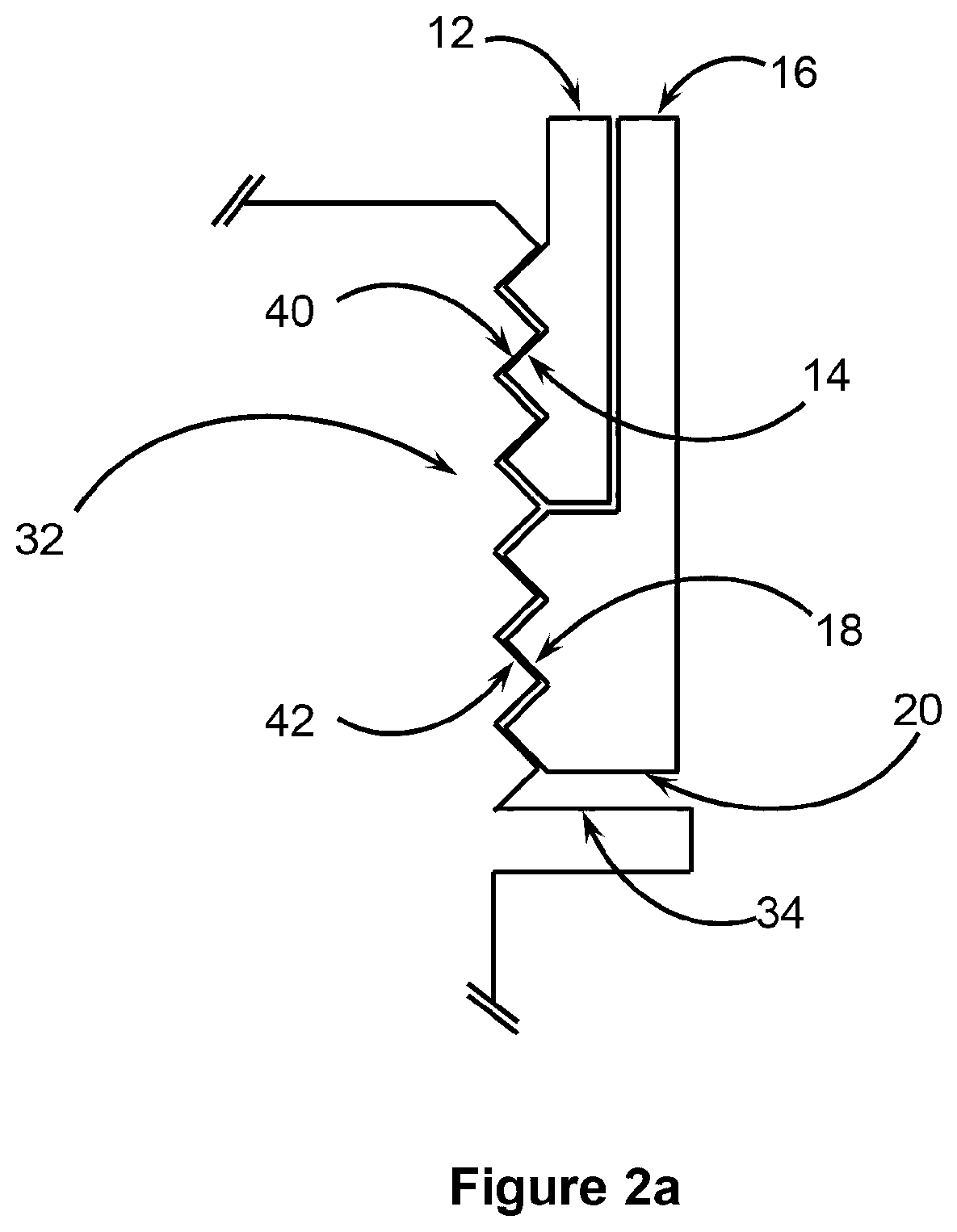Rod or tube lifting apparatus
a technology of lifting apparatus and rod or tube, which is applied in the direction of mechanical equipment, drilling pipes, screw threaded joints, etc., can solve the problems of personnel in harm's way, prone to injury, and prone to tripping operations
- Summary
- Abstract
- Description
- Claims
- Application Information
AI Technical Summary
Benefits of technology
Problems solved by technology
Method used
Image
Examples
Embodiment Construction
[0049]FIGS. 1 and 2 show a first embodiment of an apparatus 10. The apparatus 10 can be employed for lifting rod or tube and the like, such as when servicing and in the drilling of wells (e.g. oil and gas wells, etc.). The tube or rod can be anywhere from ¼″ (e.g. sucker rod) to 12″ (e.g. well casing) in diameter.
[0050]Apparatus 10 has an engagement member in the form of an inner sleeve 12, and an abutment member in a form of an outer sleeve 16 associated with the inner sleeve 12. In the embodiment of FIGS. 1 and 2, the outer sleeve 16 sleeves the inner sleeve 12 so as to be coaxially arranged thereto (i.e. having a common axis). Outer sleeve 16 is also moveable along the common axis (i.e. moveable in the direction of arrow 37) relative to the inner sleeve 12. The outer sleeve 16 also has an internally threaded region 18, which region 18 continues as an internal threaded region 14 of the inner sleeve 12. In this way, threaded region 14 and 18 forms a continuous thread. Bearings and / ...
PUM
 Login to View More
Login to View More Abstract
Description
Claims
Application Information
 Login to View More
Login to View More - R&D
- Intellectual Property
- Life Sciences
- Materials
- Tech Scout
- Unparalleled Data Quality
- Higher Quality Content
- 60% Fewer Hallucinations
Browse by: Latest US Patents, China's latest patents, Technical Efficacy Thesaurus, Application Domain, Technology Topic, Popular Technical Reports.
© 2025 PatSnap. All rights reserved.Legal|Privacy policy|Modern Slavery Act Transparency Statement|Sitemap|About US| Contact US: help@patsnap.com



